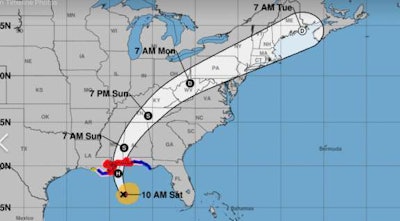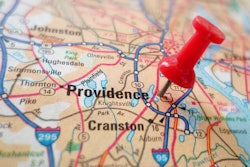
UPDATE: Nate has been upgraded from a tropical storm to hurricane status as it moves toward making landfall along the coasts of Alabama, Mississippi and Louisiana overnight tonight into early Sunday morning as a category 2 storm, according to the National Weather Service.
Nate is packing 90 mph winds and between 3 to 6 inches of rain as well as storm surges of between 5 and 9 feet in Mobile (Alabama) Bay.
Hours-of-service regulations have been temporarily waived in Alabama, Florida, Mississippi and Louisiana for truckers hauling emergency relief supplies in the wake of any damage caused by Nate.
Our original story:
If your trucking travels have you headed to or even toward the the Gulf of Mexico coast, be prepared for some possibly severe weather.
Governors of three southern states have already declared states of emergency in advance of an expected arrival of the latest tropical storm early Sunday morning.
The National Weather Service is projecting that Tropical Storm Nate could make landfall in Louisiana, Mississippi and Alabama by about 1 a.m. Sunday. Officials in Louisiana, Alabama and Florida have already declared states of emergency and are warning residents to take precautions sooner than later; some evacuations have been ordered.
The National Weather Service has issued warnings of what it calls “life threatening” storm surges along the gulf coast.
Hours-of-service regulations have been temporarily waived in Alabama, Florida, Mississippi and Louisiana for truckers hauling emergency relief supplies in the wake of any damage caused by Tropical Storm Nate.
This storm is also projected to deliver possibly heavy rains as far north as Pennsylvania and New York later next week.








